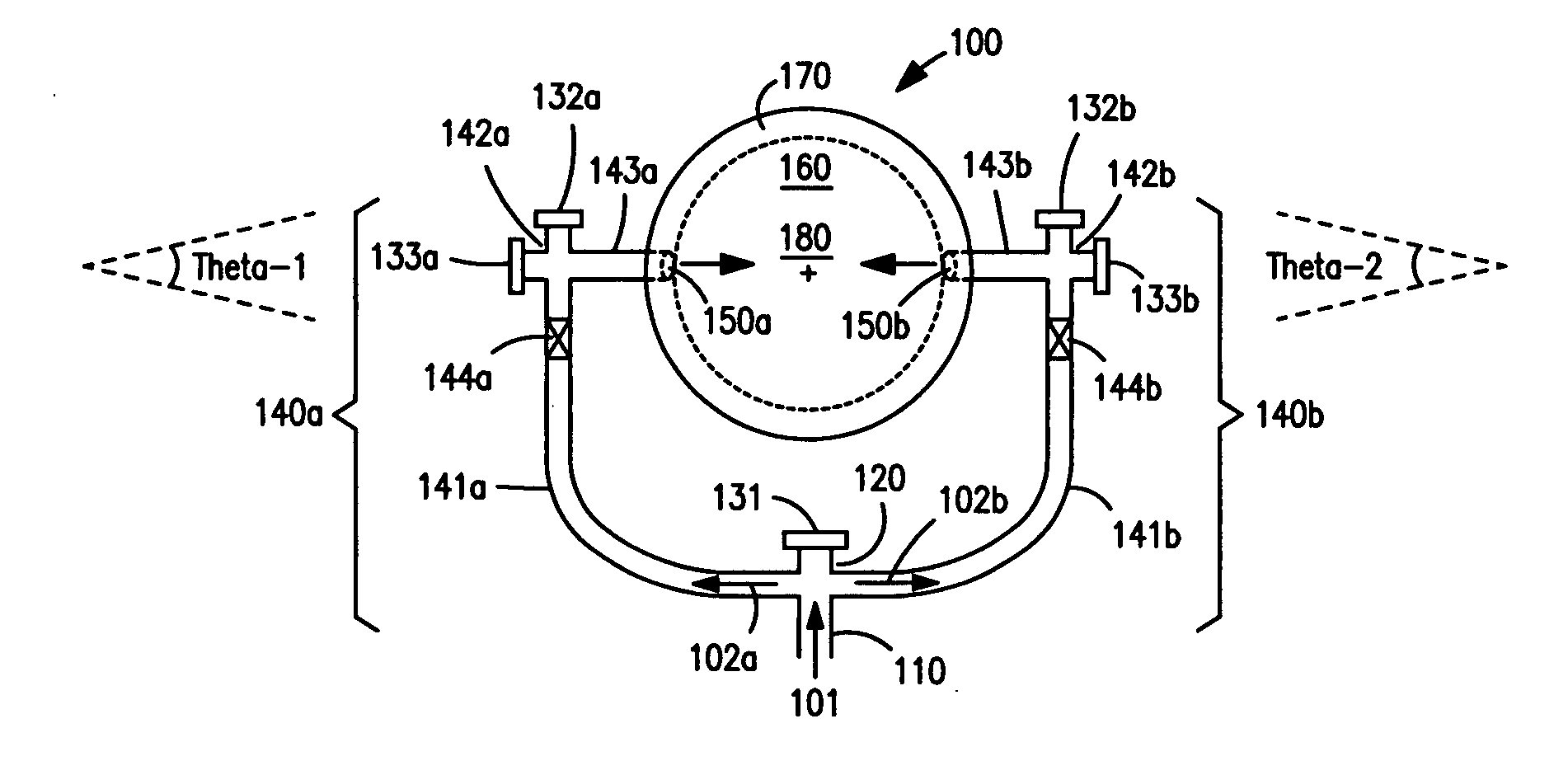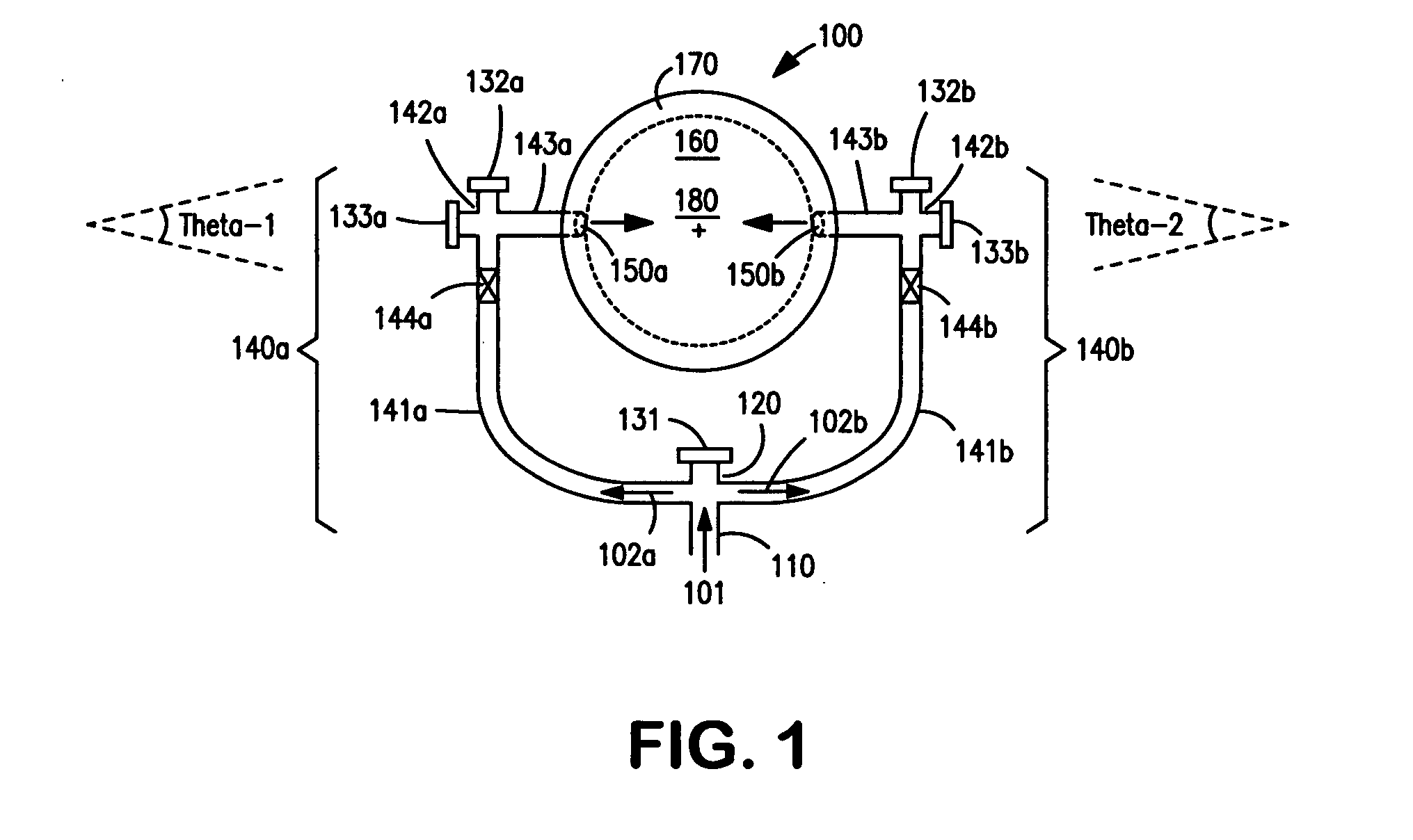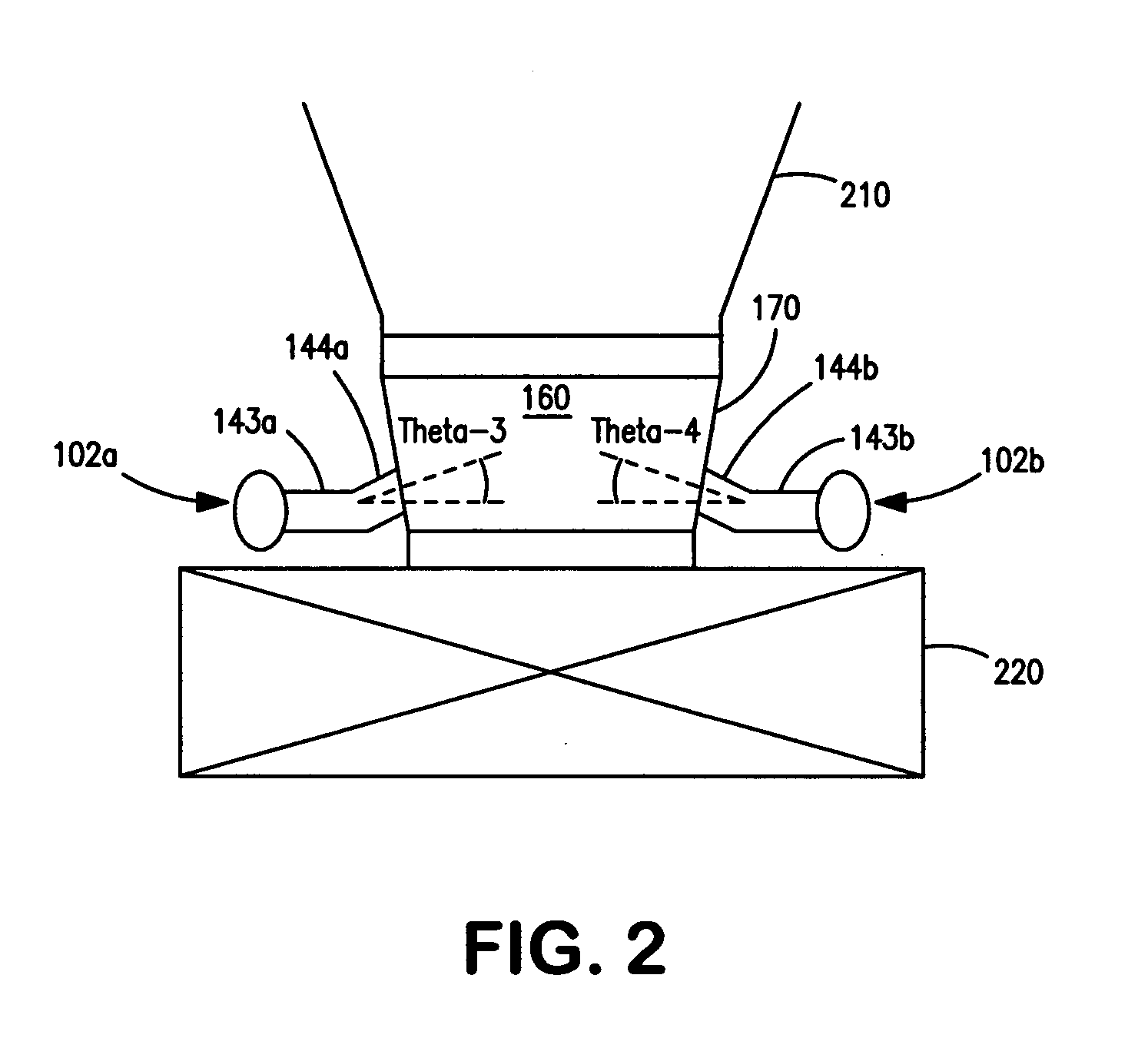Coker feed method and apparatus
a feed method and coke technology, applied in the field of delayed coke, can solve the problems of uniform heat distribution, operator exposure to steam, serious injuries and fatalities, etc., and achieve the effects of reducing the total thermal stress, and being more controllable and predictabl
- Summary
- Abstract
- Description
- Claims
- Application Information
AI Technical Summary
Benefits of technology
Problems solved by technology
Method used
Image
Examples
example 1
[0071]An existing coke drum has a 72″ diameter bottom manway, and an 8″ diameter feed line which enters the existing bottom head vertically on the center axis of the coke drum. It is desired to employ a nominal 60″ diameter Zimmermann & Jansen or DeltaValve coke drum bottom deheader valve on this installation.
[0072]A flanged 72″×60″ transition cone / spool is fabricated. The cone is fabricated from 1 Chrome ½ Moly steel and has a ⅛″ thick 410 stainless steel interior overlay. Two 6″ 9-chrome nozzles are located 180 degrees apart on the cone, and are as low to the bottom of the cone as allowed by mechanical design code. The angles that the nozzles make, relative to horizontal, are set so that if flow from the nozzle were to impinge on the opposing wall it would not impinge directly on the upper flange. In this instance, the cone is 32″ high, has a lower opening with a 60″ diameter and an upper opening with a 72″ diameter and the nozzle angles are equal and set at 5 degrees above horizo...
example 2
[0081]The system above is equipped with 28 thermocouples strategically located on the feed inlet lines, coke drum cone and coke drum valve. Temperature signals are obtained throughout the coking cycles. The temperature signals are digitized and used as inputs to automatic controllers which control the rate of the quench water so as to optimize throughput and, thereby, minimize stress on the inlet components, drum cone, and bottom valve. The temperature data also provide indices of equipment health.
example 3
[0082]In the system above, steam is added to the inlet piping during the coke drum emptying cycle to help “aerate” the coke plus water mixture exiting from the coke drum and, thereby, help control the flow rate of the coke plus water mixture.
PUM
 Login to View More
Login to View More Abstract
Description
Claims
Application Information
 Login to View More
Login to View More - R&D
- Intellectual Property
- Life Sciences
- Materials
- Tech Scout
- Unparalleled Data Quality
- Higher Quality Content
- 60% Fewer Hallucinations
Browse by: Latest US Patents, China's latest patents, Technical Efficacy Thesaurus, Application Domain, Technology Topic, Popular Technical Reports.
© 2025 PatSnap. All rights reserved.Legal|Privacy policy|Modern Slavery Act Transparency Statement|Sitemap|About US| Contact US: help@patsnap.com



